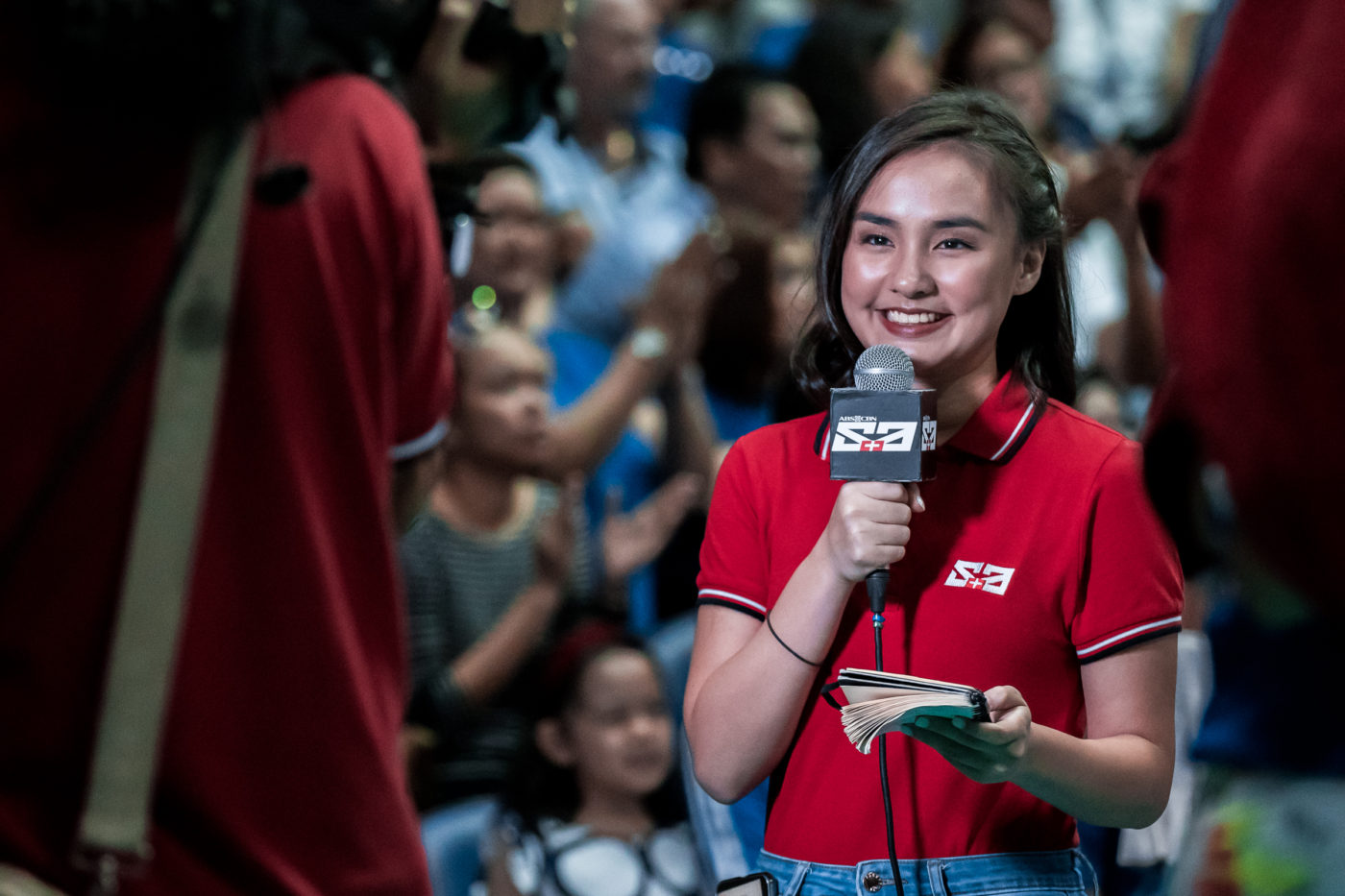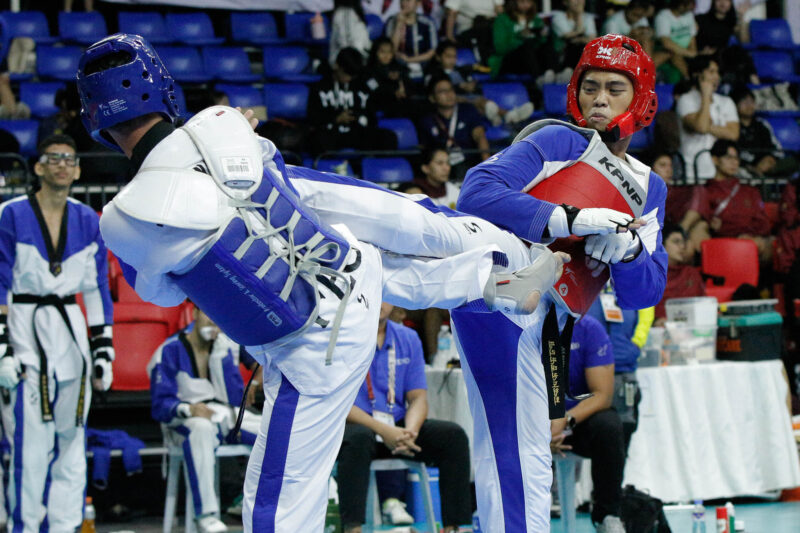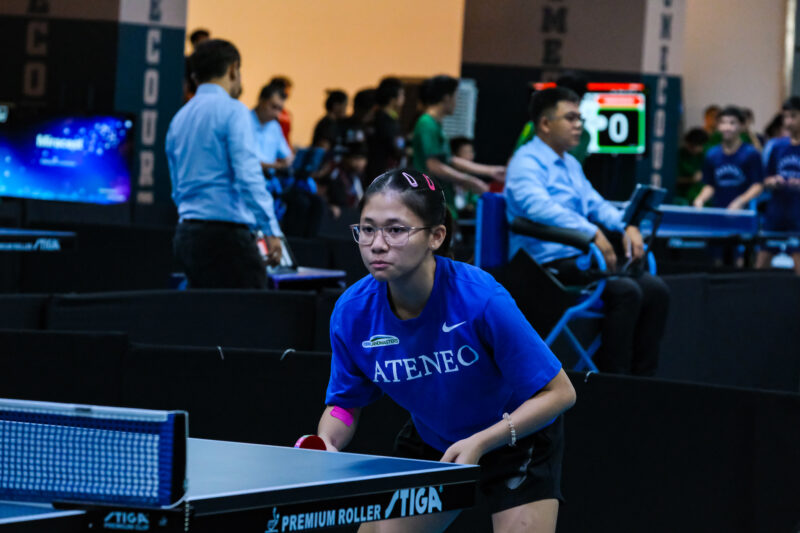It’s no secret that the Philippines is obsessed with college basketball. With every University Athletics Association of the Philippines (UAAP) season that comes and goes, avid fans of the sport go through various measures to indulge and immerse themselves in the experience. However, aside from getting to know the actual teams, fans also like to familiarize themselves with another UAAP mainstay: The courtside reporter.
Oftentimes, these reporters take on the front line of sports journalism while reporting from the sidelines of a game. Tasked to deliver both live updates and pre-game news, they are expected to have not only a knack for reportage, but also knowledge of the sport and the players they are to report about. While the role is not limited to one gender, courtside reporters at the collegiate level are mostly women.
Taking on the role has been seen as a privilege, but for many female correspondents, there still exists the risk of objectification once they choose to be in front of the camera. Annually, these reporters become the subjects of articles such as “Who’s This Year’s Prettiest Courtside Reporter?” and local forums that openly speculate about their personal lives. Regardless, courtside reporters continue to aspire to break the glass ceiling by proving that there is more to them and their craft.
Pre-game sentiments
Most courtside reporters realize their calling for sports journalism from watching sports broadcasts, while some point to the larger scene of Philippine media as a motivator.
Maharlika Pilipinas Basketball League courtside reporter Gianna Llanes (AB COM ‘18) shares how she grew up in Canada and had little exposure to Filipino television. “In all honesty, I entered the entertainment industry at the age of 18 where I didn’t know much,” she said.
On the other hand, Ateneo’s Season 81 UAAP courtside reporter Frannie Reyes (4 AB MEC) knew her calling for court early on. “It was a long time joke [and] dream for me to report in the UAAP. I grew up watching the UAAP and I wanted to be a part of it,” Reyes says. “I was scared, of course. This was something new and uncharted for me.”
Ateneo UAAP Season 79 courtside reporter Denice Dinsay (AB COM ‘18) shares similar sentiments: “It wasn’t by chance that I got accepted to be a courtside reporter. I’ve always sought and prayed for my career path, so this was an answered prayer.”
Regardless of the varying reasons as to why they initially got into courtside reporting, the three women express similar apprehensions prior to becoming media personalities. Llanes and Reyes mention how they both felt nervous about being put in a position where they would not be immune to judgment; Dinsay affirms this by talking about her initial introversion and her anxiety about her newfound responsibilities as a public figure.
“The moment you are [in] the spotlight and people’s eyes are on you, there is a responsibility to be more mindful of your words and actions because you have a wider [reach].” Dinsay says.
Nonetheless, the three persevered. “I thought to myself, I had nothing to lose, and [so I] went for it,” Reyes says.
Off-camera setbacks
While persistence amid personal insecurities and screening processes has given these courtside reporters the spotlight, these women continue to face a variety of challenges even after they have secured the mic. Issues such as objectification and misrepresentation plague women in today’s media landscape, and the sports scene is, unfortunately, no exception.
Llanes expresses her views on being a media woman in a male-dominated industry. “When I first became a courtside reporter for the UAAP, I found [that] we [were] all compared by our looks,” she laments.
Similarly, Dinsay goes on to cite the common stereotypes that come with being a courtside reporter; more often than not, there is a struggle for women to prove themselves capable and credible beyond the surface-level perceptions people make of them. “Smart or capable is not the first thing that comes to one’s mind,” she says. “I’m not generalizing everyone, but there is that thinking that I got the position because of [my] ‘looks.’”
Llanes adds to this by mentioning specific instances, such as how it was more likely for her to receive comments on her physical appearance than on the content of her reports. “I tell people that being a female courtside reporter in a male-dominated sports industry is very difficult and I still see some comments saying ‘she’s pretty’ or ‘she has a nice smile’ over ‘she has good content in her reports,’ but it makes me work harder to someday make my mark,” she explains.
On the other hand, Reyes says she experiences things that a man might never have to; most women have to deal with the media’s overall obsession with face value, thus adding to the challenge of being taken seriously in what has been criticized as “a boys-only playground.”
In a profession as exacting as reporting, all three women agree that it’s best to surround yourself with supportive and uplifting people. Dinsay, for instance, gets by with the help of the reporting community that first welcomed her to the court. “It’s hard to break out in this industry and even harder when you’re female, [because] you have to work harder to be recognized and respected. It helps to have people who back you up, encourage, and empower you,” she says.
The ball in their court
The platform of a courtside reporter allows them to leave an impact on viewers nationwide—a privilege that should not be taken for granted.
Reyes acknowledges this responsibility and practices honesty as a reporter. “[At] the end of the day, I have this opportunity to tell the truth about something, even if that’s just the lives of athletes or what’s going on in the games,” she says.
Dinsay, on the other hand, values diplomacy most of all. “We must be wise and graceful with our words as we have the beautiful privilege to shape people’s minds and beliefs,” she says. “I think people should always pursue the truth. We need to be more vigilant than ever because this is a time of [relativity] and subjectivity—it’s a dangerous thing.”
Llanes ties it all together by emphasizing the importance of perseverance in the name of representation. “I think it’s important to have women working in media now more than ever because it’s about time,” she says.
As the women of the local sportscasting scene aspire to prove that the court can be shared by all, we are reminded of the even bigger significance of having female representation in sports journalism. Although progress in the press box could still be considered pretty slow, courtside reporters are some of the first to insist that there is room for everyone—it’s time to eliminate age-old stereotypes and instead give credit where it’s due.
“Despite being told that they have no place in media, [women] have to continue to write, to speak, and to share what they believe the world should know,” Llanes says. “When [women] are ridiculed, they turn that opposition around by showing that they are powerful too.”







